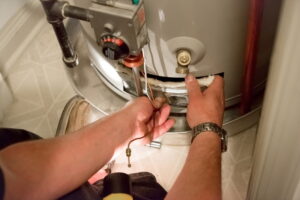Boilers have advanced tremendously during the more than a century that they have heated businesses and homes. Few boilers use steam any more to send heat through their pipes, and the cast-iron radiators of yore have gradually vanished in favor efficient baseboard heaters. Another way boilers have made a technological leap forward is with the invention of the expansion tank to replace primitive methods of regulating water pressure inside the boiler to protect it from “water hammer.”
We’ll take a close look at this important component of the operation of your boiler in West Chester, OH. If you encounter any troubles with your expansion tank or other parts of your boiler, call the 24-hour emergency service technicians at Bartels Heating & Cooling.
What the expansion tank does
If you look at the top of the water tank of your boiler, you will notice what looks like a smaller water tank attached to a pipe. That’s the expansion tank. Although the name may make it sound like it’s a container for extra water, that’s not how boilers work. (They have a set amount of water already in them, and more water won’t make them work any better.) The expansion tank does the job of maintaining even pressure inside the boiler by giving its water a place to expand and a cushion to absorb the pressure and then regulate it.
Inside the expansion tank, a diaphragm divides the chamber into two sections. On one side, water from the boiler tank flows in through a pipe; on the other side is air controlled by a valve. When the pressure in the boiler increases, the water in the expansion tank presses against the diaphragm and the air on the other side, which alleviates the pressure. The air valve then pushes back against the water until the valve registers that pressure has reached normal once more.
This system prevents air from entering the water. Older boilers simply had an open space at the top of the main tank to absorb the pressure from water hammer (a pressure surge from water motion when a valve closes), but the introduction of air into the tank would promote corrosion. The expansion valve keeps the air and the water separate.
Keep the expansion tank working
Expansion tanks can suffer damage and lose their seal against water or start losing air. When this happens, you need to call for repairs before your boiler’s pressure increases and begins to cause leaks. Call for repairs for your boiler in West Chester, OH from Bartels Heating & Cooling. We also offer a maintenance program that will make sure the expansion valve is always in the best shape possible. Call us to sign up today.
Continue Reading
Tags: Boiler, Expansion Tank, West Chester
Posted in Heating | Comments Off on Boiler 101: The Expansion Tank

